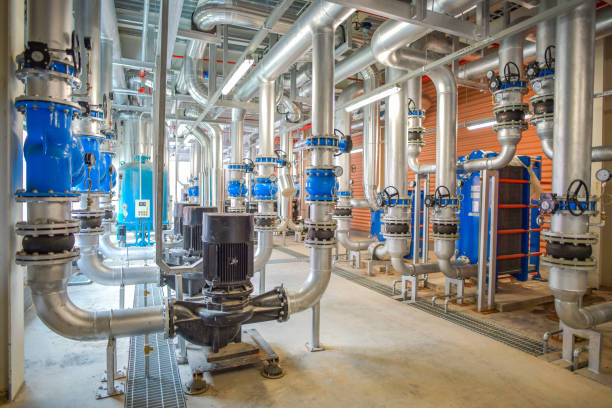Pipelines are essential to the movement of gases and liquids in the realm of commercial and industrial infrastructure. The dependability and integrity of these systems are essential for anything from water distribution systems to pipelines carrying gas and oil. Piping stress analysis is a vital aspect that has a big impact on the durability and security of piping systems.
Stress Analysis in Piping Systems: What Is It?
The process of stress analysis is assessing the physical strains and stresses that a piping system may encounter over time. Examining variables including internal pressures, outside factors, temperature fluctuations, vibrations, and other dynamic impacts is part of this. Piping stress analysis engineer can determine where and how a system can fail or deform over time by simulating real-world situations using advanced modeling approaches.
An extensive stress analysis can help engineers find weak places, stop any failures, and make sure the design of the piping system can handle the forces it will encounter over time.
For Piping Systems, Why is Stress Analysis so Essential?
Stopping Leaks and Failures
The cost of conducting stress analysis up front is much lower than the cost of a failing piping system. Pipeline leaks can result in serious financial losses, health risks, and devastating environmental catastrophes, particularly in sectors like oil and gas. Engineers can proactively reinforce weak areas, apply protective coatings, or incorporate extra safety features to stop leaks by anticipating where breakdown might occur owing to high stresses. As a result, the system is safer, more dependable, and less likely to experience unplanned malfunctions.
Maintaining the Integrity of the Structure
Numerous forces, such as internal pipe pressure, external forces from supports or the environment, and thermal expansion, are frequently applied to piping systems. Finding out whether the selected materials can sustain these forces without failing is made easier with the aid of stress analysis. Excessive stress can cause a pipe to corrode, crack, or deform, posing a risk to safety or necessitating expensive repairs or downtime. Engineers can optimize the design and choose the best materials to preserve the structural integrity of the piping system by being aware of these stress areas beforehand.
Cutting Down on Maintenance Expenses
Over time, a well-designed piping system that is founded on a comprehensive stress study needs less maintenance. When stress analysis is done properly, engineers can take into consideration possible design flaws and address them prior to system installation. This lowers the likelihood of requiring expensive repairs, maintenance downtime, and the system’s overall lifecycle cost. Over time, stress analysis guarantees a more robust, efficient, and sustainable system, lowering operating expenses and the need for maintenance.
Allowing for Contraction and Thermal Expansion
Pipes may expand and contract in response to temperature variations. This natural expansion can put a great deal of strain on pipes, couplings, and supports if a piping system is not built to handle it. This can eventually result in damage. By taking into consideration the effects of temperature variations and assisting engineers in designing systems that take thermal expansion into account, stress analysis makes sure that pipes are safe and effective even when temperatures fluctuate.
Improving Pipe Layouts
Pipe systems are frequently a part of larger networks and systems, necessitating particular support structures and layouts. Through stress analysis, engineers can assess how various configurations affect the general operation of the system. The most economical and efficient design that minimizes needless material use while guaranteeing the system can still withstand operating circumstances can be found by engineers by modeling how different piping system components would respond under stress.
Respecting Regulatory Standards
Many sectors must adhere to stringent safety and operational integrity rules, particularly those that include hazardous products or high-pressure systems. By using stress analysis, plumbing systems can be made to adhere to international, national, and local rules and standards. Maintaining the company’s reputation for dependability and respect to safety regulations, ensuring workplace safety, and avoiding legal ramifications all depend on compliance. In order to confirm that the piping system would function safely under anticipated circumstances, regulatory agencies frequently demand stress analysis studies.
Concluding Remarks
When constructing dependable and long-lasting piping systems, stress analysis is a crucial component. Engineers can optimize the system configuration, guarantee structural integrity, minimize failures, and lower maintenance costs by assessing the stresses a system will experience while in use. The safety and effectiveness of piping systems are ultimately guaranteed by stress analysis, which also assists companies in avoiding expensive repairs, downtime, and regulatory problems.
In sectors where dependability is essential, stress analysis should never be disregarded. Making piping systems resilient to the effects of time, temperature, and operational demands is a crucial step in maintaining their longevity. Businesses may make sure that their piping infrastructure has a safe, economical, and sustainable future by investing in appropriate stress analysis.
